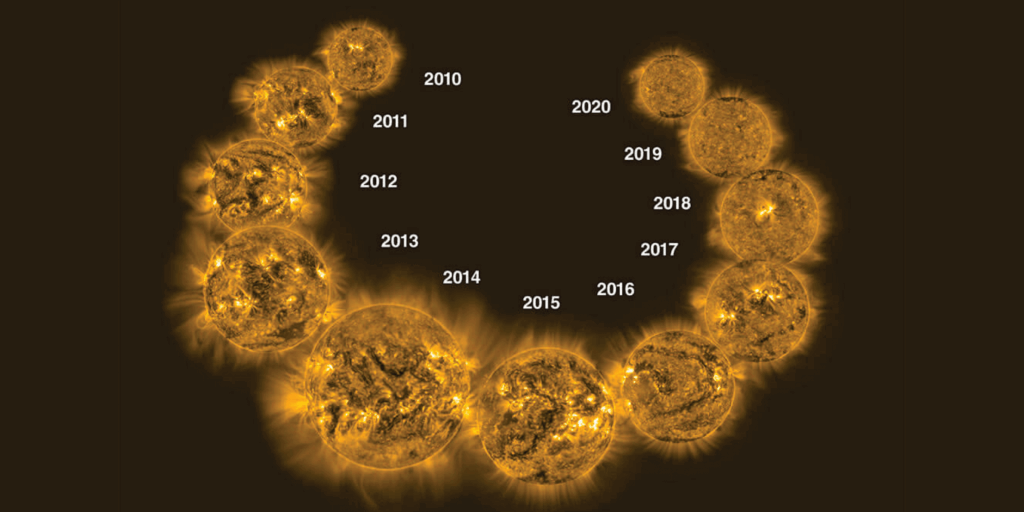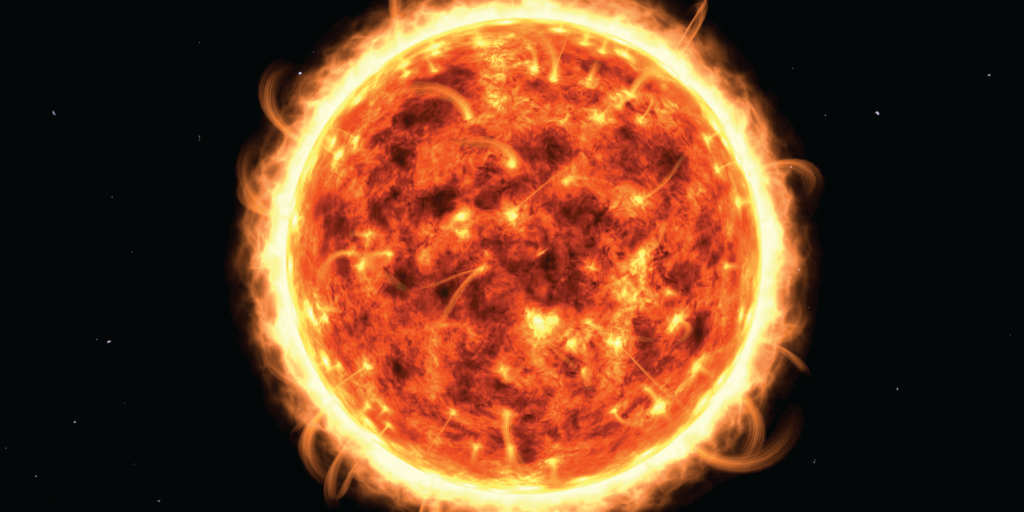
The sun is the solar engine at the center of our solar system and produces 384.6 septillion watts of energy every second. To put it another way, the sun generates as much energy in one hour as all of humanity used the entire year of 2017.
Earth catches a mere fraction of this energy as it must travel millions of miles to us, but the energy absorbed fuels nearly all the life on our planet. The heat and light impact our weather cycles and are why CO2 emissions are devastating Earth’s climate.
Knowing how the sun impacts weather patterns may help clarify how our systems threaten our overall climate and how going solar is one of the most reliable ways to generate your own energy and curb fossil fuels at an individual level.

The Sun’s Impact on the Earth
The sun’s heat and light, combined with Earth’s 24-hour rotation, govern day-night and summer-winter cycles, also warming huge air masses which affect local and global weather systems. This fluctuating, shifting system is the constant flow creating the climate.
The closer you look, the more complex it is, which is why scientists have been studying the relationship between the Earth and the sun for decades.
For example, heat and light hit Earth but have to pass through the atmosphere, which is made of several layers—each of which react differently. Both the ozone layer (hovering around 16 miles above us) and the ionosphere (a series of layers extending 37 miles above us) react very strongly to the sun’s ultraviolet light and X-rays. Each is vital in its own way to human civilization. The ionosphere is a sea of electrically charged particles high above us. It is where many of our satellites orbit (including the International Space Station) and is useful for reflecting radio waves in communication. The ozone layer is responsible for blocking much of the harmful ultraviolet passing through the ionosphere. Neither is something our planet can survive without, and both are impacted by the sun.
Beyond the impact it has on our planet, the sun is also changing from year to year. Did you know the sun has its own solar cycle scientists have been measuring since 1755?
The Solar Cycle
The sun appears constant in our sky, yet it is extremely active and volatile. Incandescent plasma roils and shifts and the amount of ultraviolet radiation shifts with it. As we’ve observed, the sun’s activity tends to rise and fall approximately every 11 years over its solar cycle. We have recently entered Solar Cycle 25, but here is a range conveying some of what the last cycle looked like:

CREDIT: Dan Seaton/European Space Agency (Collage by NOAA/JPL-Caltech)
As you can see, the ultraviolet images captured from the PROBA2 telescope show a period of maximum activity around 2014 and a lull around 2020. The bright peaks and dark swirls represent giant eruptions on the sun like solar flares and coronal mass ejections, which occasionally hit Earth. To the human eye, we usually experience these as lights in the sky called auroras, though extreme eruptions may affect our electricity grids by creating an electrical current which runs through the ground and can cause the transformers in the grid to overheat and malfunction.
Luckily this activity does not result in abominable summers or unbearable winters. The total energy received from the sun over a solar cycle only varies by about 0.1 percent, which is not enough to cause climate change. If a solar cycle were powerful enough to affect the climate, there would be swings every 11 years.
How Solar Cycles Affect the Weather and Climate
The scientific community agrees CO2 emissions and other fossil fuels are among the main contributors of climate change. It is important to remember the mechanics to understand why.
- Sunlight comes from the sun to Earth, passing through the atmosphere as radiation and warming the surface of the Earth. About half of it is absorbed as heat while the rest reflects back up into the atmosphere.
- Greenhouse gasses keep more of this radiation in the atmosphere, rather than letting it pass back through—which results in more heat being kept within the atmosphere.
- Scientists believe the increase or decrease in ultraviolet activity may impact our atmosphere in ways we haven’t figured out as well.
A new space mission called the RADiation Impacts on Climate and Atmospheric Loss Satellite (or RADICAL) is a low-Earth orbiting mission scheduled for launch around 2026. It is designed to investigate the transport of space radiation into the atmosphere—and how it may impact our climate.

What to Expect over the Next 10 Years
We will not see results from the mission until after RADICAL’s launch, but researchers have predictions of where the sun is headed with its solar cycle and how our climate expectations may change because of it.
The sun is presently coming out of its minimum activity phase in the solar cycle and should be at its peak around 2025 or 2026. This will be a period of increased ultraviolet activity. However, some scientists speculate this cycle may be less active than most.
The “grand minimum” is a term for a periodic solar event where overall solar magnetism diminishes and there are fewer sunspots. The largest recent minimum, called the Maunder Minimum back in 1645, coincided with the Little Ice Age. Grand minimums like this may last for decades or even centuries. The Maunder Minimum lasted between 1645 and 1715.
While there is insufficient evidence to support the grand minimum theory at this time, studies suggest if we were entering a grand minimum, it may cool our planet as much as 0.3 degrees Celsius. This, at its very best estimates, would only slow down human-caused global warming. It would not permanently offset global temperatures either once the grand minimum period ended—we’re not heading into another ice age.
Solar Today for a Brighter Tomorrow
Understanding solar cycles and these predictions will help us navigate the future, both in terms of expectation and planning. While the sun does change over its cycles, its overall heat and light remain a reliable source of energy to power the world. The sun also remains a perpetual heat generator, creating more heat and the generation of greenhouse gasses trapped in our atmosphere.
At best, a grand minimum may lend us time as climate activism efforts strive to keep average global temperatures from increasing more than 1.5 degrees Celsius. Climate change affects us today, and we cannot rely on the sun’s shifting cycles to save us from it.
Solar energy is a cleaner, more renewable energy source. With a rooftop solar system, the total emissions associated with generating 1 kWh of electricity are 12 times lower than natural gas and 40 times lower than coal. This means each home which adds a rooftop solar system makes a measurable impact. It all adds up as the average custom solar panel system installed by Blue Raven Solar can offset over 175 tons of CO2 over its lifetime.
As more homeowners opt to rely on the engine at the center of our solar system, we move further away from burning oil, coal, and natural gas. The sooner we make the transition, the more likely we are to hit our climate goals as a global community.
With the right team, the switch to solar is simple. At Blue Raven Solar, we’re dedicated to making your move to renewable energy easy and affordable. To learn how much you can save on your monthly utility bills with solar, contact us to get a free savings estimate.



Sorry, the comment form is closed at this time.